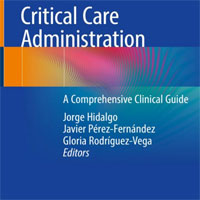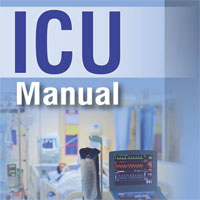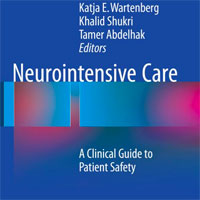Stories Category: Intensive Care
A Retrospective Closed Cohort Study on Distribution of Multidrug-Resistant Bacteria in VAP and its Impact on Patient Outcome
Gram-negative organisms, particularly Klebsiella and Acinetobacter, were the main multidrug-resistant (MDR) ventilator-associated pneumonia (VAP) culprits. MDR-VAP exhibited higher morbidity and mortality. A study... read more
Accuracy of Continuous Glucose Monitoring Systems in ICU Patients
In this scoping review of CGM accuracy in the ICU, we found great diversity in accuracy reporting. Accuracy varied depending on CGM and comparator, and may be better for intravascular CGM and potentially lower during hypoglycemia. We... read more
Ineffectiveness of Therapeutic Plasma Exchange – Last Resort in Severe COVID-19
Patients severely infected with SARS-CoV-2 showed fluctuations in inflammatory parameters despite TPE treatment; CRS was not suppressed by TPE; and this treatment did not confer survival benefit in this patient group. A... read more
COVID-19 Pneumonia: Different Respiratory Treatments for Different Phenotypes?
Type L and Type H patients are best identified by CT scan and are affected by different pathophysiological mechanisms. If not available, signs which are implicit in Type L and Type H definition could be used as surrogates:... read more

Critical Care Administration: A Comprehensive Clinical Guide
This book provides a state-of-the-art overview on critical care administration. The text reviews important aspects and considerations involved in developing an efficient, cost-effective critical care program, while maintaining... read more
CDC Reports Rising Levels of Mycoplasma Pneumonia and RSV in Young Kids
Though the nation’s respiratory disease levels remain low overall, with COVID levels declining and little sign of a flu uptick, illnesses caused by Mycobacterium pneumoniae are increasing, especially in children, and respiratory... read more
Oxygen Therapy and Noninvasive Respiratory Supports in Acute Hypoxemic Respiratory Failure
Whereas oxygen supplementation should be initiated for patients with acute hypoxemic respiratory failure defined as PaO2 below 60 mm Hg or SpO2 ... read more

ICU Manual
This practical guide provides a multidisciplinary, clinically oriented approach to the management of patients in intensive care. The book discusses the complete range of specialties, including cardiology, pulmonology,... read more
Disease Progression Associated Cytokines in COVID-19 Patients with Deteriorating and Recovering Health Conditions
Understanding the immune response to COVID-19 is challenging due to its high variability among individuals. To identify differentially expressed cytokines between the deteriorating and recovering phases, we analyzed the Electronic... read more
The Impact of COVID-19 Pandemic on Respiratory Syncytial Virus Infection in Children
We observed a lower incidence of RSV infection and a lower rate of hospitalization for RSV during the COVID-19 pandemic. The second RSV season during the COVID-19 pandemic began earlier, lasted longer, and had a lower frequency.... read more
Prediction Model for Safe Early Discharge of Patients with an Infection
By combining readily available parameters, we developed and internally validated a prediction model for safe, early discharge among patients. Further research, preferably in a multi-center setting, is warranted to externally... read more
Tele-ICU Rounds Ineffective in Shortening ICU Stay for Patients
Daily multidisciplinary rounds conducted by a board-certified intensivist through telemedicine do not reduce intensive care unit (ICU) length of stay (LOS) in critically ill adult patients, according to a study published... read more
Presepsin Does Not Predict Risk of Death in Sepsis Patients Admitted to the ICU
In patients with suspected sepsis admitted to the Intensive Care Unit, presepsin does not accurately predict the risk of in-hospital death, but it can predict a positive microbiological culture. Adult patients were included... read more

Neurointensive Care: A Clinical Guide to Patient Safety
This book provides guidance for physicians confronted with acute neurological crises in the context of patient safety centred practice standards. It highlights how the implementation of patient safety standards in the neurointensive... read more
Predictive Value of Combined Detection of Serum LGALS3BP and GDF-15 for the Prognosis of ICU Sepsis Patients
Serum LGALS3BP and GDF-15 levels are abnormally elevated in the death group of ICU sepsis patients, suggesting potential application value as prognostic markers for sepsis. The combined use of LGALS3BP and GDF-15 can... read more
Correlation of Serum Albumin Levels With the Severity of Sepsis Among ICU Patients
In the present study, serum albumin level was noted as a reliable predictor of sepsis severity in ICU patients. Lower serum albumin levels were associated with higher SOFA scores, indicating more severe sepsis. This study... read more
Procalcitonin and Neutrophil to Lymphocyte Ratio Trends in ICU Sepsis Patients
Understanding the trends of PCT and NLR concerning the infection source can provide deeper insights into their diagnostic and prognostic capabilities. This comparative analysis of PCT, NLR, and SOFA score trends contributes... read more








